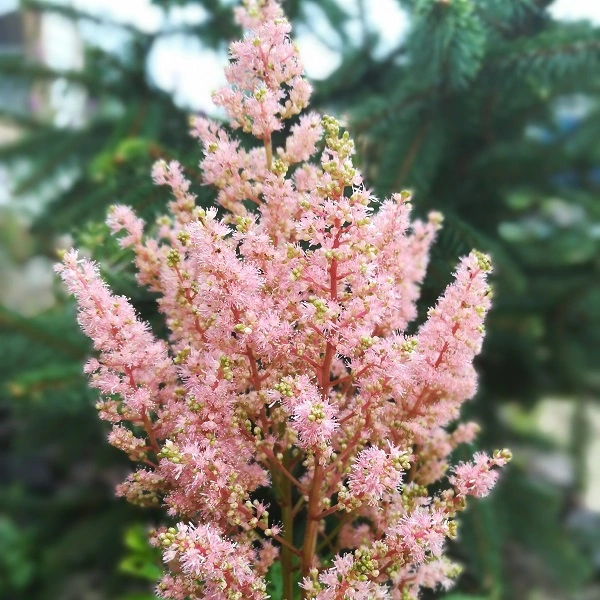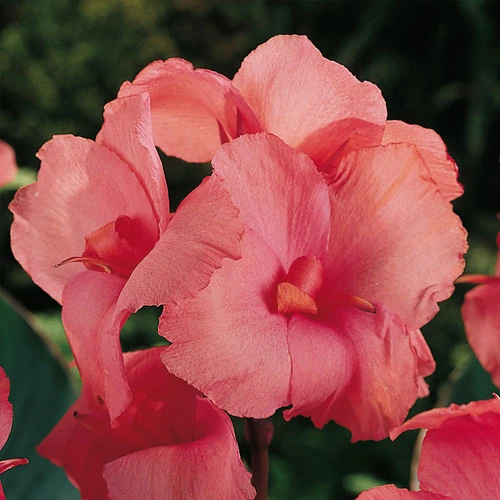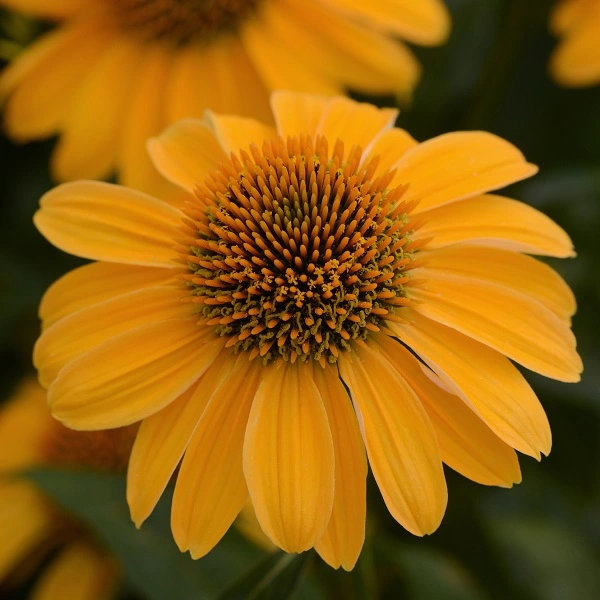Bleeding Heart (Dicentra) - Bareroot
Where to plant– Bleeding Heart perform best in part to full shade with moderate moisture. Avoid planting in areas that receive the hot afternoon sun.
When to plant– Bleeding Heart are dormant at the time of shipment. Plant them right away. If you cannot plant immediately after receiving these plants, the tubers can be stored in the refrigerator or other cool place. Sprouting should occur in just a few weeks. They should be planted in the spring to get a good rooting before the heat of summer kicks in, as they perform better in cooler temperatures.
How to Plant– The soil where you plan to plant your Bleeding Heart should be worked into a good, loose condition to a depth of at least a foot. Incorporate in the hole a mixture of compost, good garden soil, peat moss, sand or well-rotted manure (whatever is available for a good loose growing medium). Make a mound in the center of the hole. Remove all packaging. Set the plant in place with the roots spread on each side of the mound. You should plant the eyes slightly below the soil line. Work the soil around and between the roots as you cover the plant. Firm the soil and water well. Make sure there are no air pockets. Plant spacing varies by variety. Please look at the plant’s mature spread before planting. Some varieties multiply very fast, and your clumps will become crowded if planted too close to each other.

Astilbe - Bareroot
Where to plant–Astilbe prefer the shade in warm climates, but will tolerate more sun in cooler climates. Water is the most critical growing factor and plants should never be allowed to dry out!
When to plant– Astilbe are dormant at the time of shipment. Plant them right away. If you cannot plant immediately after receiving these plants, the roots can be stored in the refrigerator or other cool place. Sprouting should occur in just a few weeks. Astilbe can be planted spring through fall. In the fall you need to plant 4 weeks prior to the ground freezing to alleviate heaving.
How to Plant– The soil where you plan to plant your Astilbe should be worked into a good loose condition to a depth of at least a foot. Incorporate in the hole a mixture of compost, good garden soil, peat moss, sand or well-rotted manure (whatever is available for a good loose growing medium).( Make a hole. Remove all packaging.) Set the plant in the hole with the eyes (pointy, fuzzy ends) up, just below the soil line. Work the soil around the roots as you cover the plant. Firm the soil and water well. Make sure there are no air pockets. Plant spacing varies by variety. Please look at the plant’s mature spread before planting. Some varieties multiply very fast, and your clumps will become crowded if planted too close to each other.

Cannas- Rhizomes
Where to plant–Cannas love full sun and require a minimum of four hours direct sunlight. They are hardy in zones 7 through 11.
When to plant– Cannas can be planted any time after your last hard freeze.
How to Plant– Plant canna roots 12-18 inches apart, covering with two inches of soil. Place the long part of the root horizontally in the ground with the eye up, if visible. Plant in loose, fertile and well-drained soil. For customers living in zones 2 through 6, there are two ways to enjoy tropical cannas in your own garden; you can treat them as an annual and enjoy their beauty for a single season, or you can dig up the roots in the fall and replant them every spring.

Coneflower (Echinacea) - Bareroot
Where to plant– Coneflowers do well in full sun to part shade. Plant in well-drained soils. Young plants need more water to get established but once established, they are very drought tolerant.
When to plant– Spring Coneflowers are dormant at the time of shipment. Plant them right away. If you cannot plant immediately after receiving these plants, the roots can be stored in the refrigerator or other cool place. Sprouting should occur once temperatures are consistently 65° F.
How to Plant– The soil where you plan to plant your Coneflower should be worked into a good loose condition to a depth of at least a foot. Incorporate in the hole a mixture of compost, good garden soil, peat moss, sand or well-rotted manure (whatever is available for a good loose growing medium). Make a mound in the center of the hole. Remove all packaging. Set the plant in place with the roots spread on each side of the mound. You should plant the crown (the point where foliage and root join), at the soil line. Work the soil around and between the roots as you cover the plant. Firm the soil and water well. Make sure there are no air pockets. Plant spacing varies by plant variety.

Lenten Rose (Helleborus) – Bareroot
Where to plant– Lenten Rose like well-drained soils in part to full shade.
When to plant– Lenten Rose grow best when planted in the spring but can be planted until fall. In the fall you need to plant 4 weeks prior to the ground freezing to alleviate heaving.
How to Plant– The soil where you plan to plant your Lenten Rose should be worked into a good loose condition to a depth of at least a foot. Incorporate in the hole a mixture of compost, good garden soil, peat moss, sand or well-rotted manure (whatever is available for a good loose growing medium). Make a mound in the center of the hole. Remove all packaging. Set the plant in place with the roots spread on each side of the mound. You should plant the crown (the point where foliage and root join), at the soil line. Work the soil around and between the roots as you cover the plant. Firm the soil and water well. Make sure there are no air pockets. Plant spacing should be 12-18 inches apart.
Lenten Rose are poisonous. Do not consume any part of the plant!

